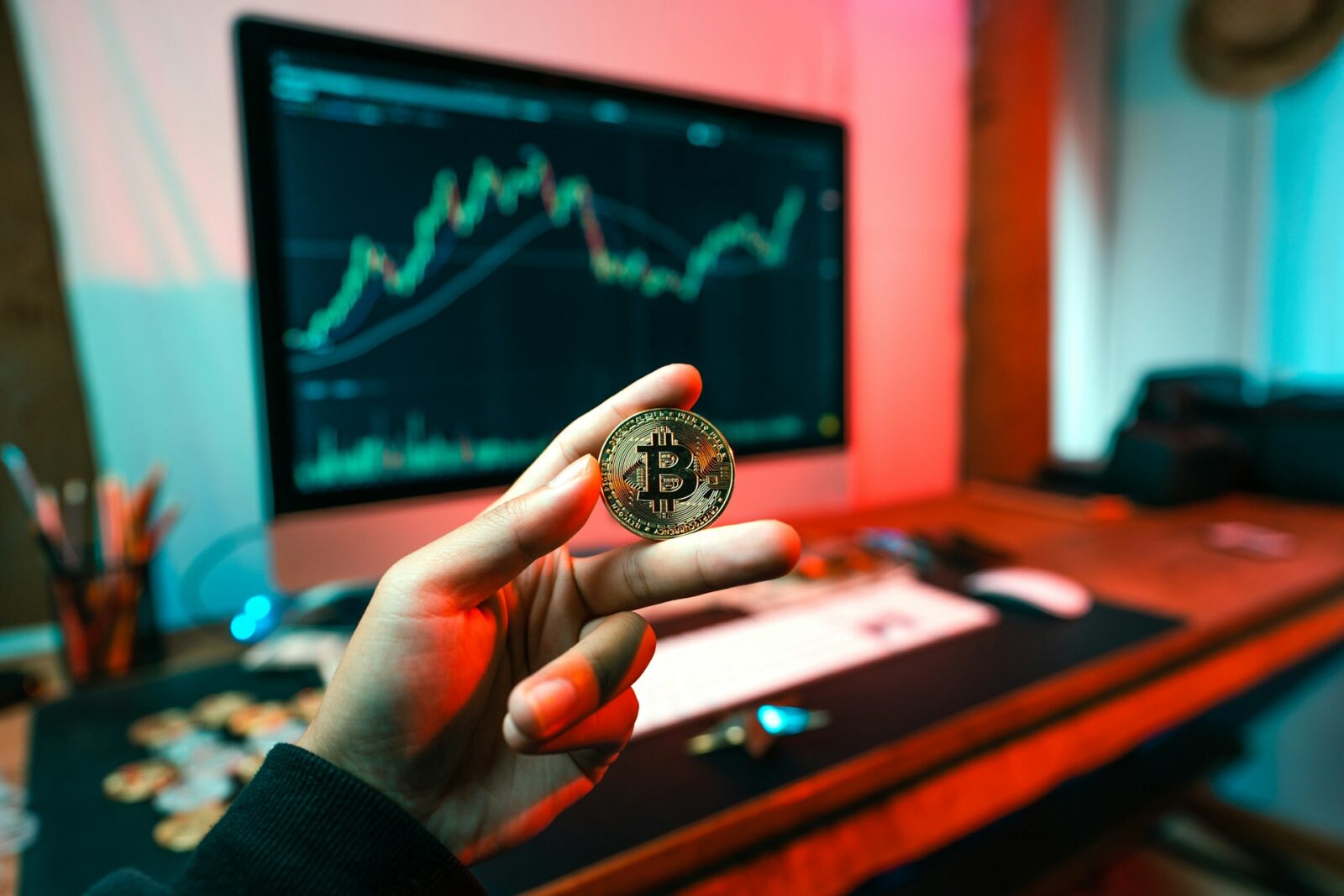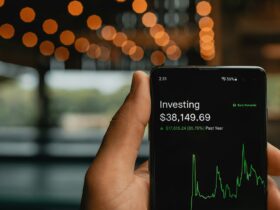The Return of the Safe-Haven Debate
As the global stock market limps toward the end of the year, weighed down by inflation fears, interest rate uncertainty, and geopolitical risk, investors are once again asking an age-old question: Where do you hide when the markets break?
For generations, the answer was simple — gold. The world’s oldest store of value has long been the default safe haven in times of crisis. But in the digital era, a new contender has entered the ring: Bitcoin.
In 2025, both assets are flashing on investor radars for very different reasons. Gold prices are hovering near $4,000 an ounce, their highest level in history, while Bitcoin, fresh from a rally past $100,000, is testing whether decentralized scarcity can outshine metallic tradition.
But in a market torn between inflationary pressures and recessionary fears, which is the safer bet — crypto or gold?
Let’s break down the performance, correlation, and sentiment behind both assets to understand where smart money is heading as 2026 approaches.
The Fractured Market That’s Fueling Alternative Assets
A recent study from Charles Schwab found that while most traders remain cautiously bullish on equities, 67% believe the stock market is overvalued — a 10-point jump since midyear. Even more alarming, 57% of investors now say stagflation — the toxic mix of slow growth and high inflation — is “somewhat or very likely” within the next 18 months.
Against this backdrop, both gold and crypto have gained momentum as hedges against market instability and monetary policy missteps.
The S&P 500 fell 2% over the past five trading days, but capital flows into gold and Bitcoin ETFs surged — signaling investors are diversifying into non-correlated assets.
Let’s examine how both are performing and what’s driving their trajectories.
Gold: The Timeless Safe Haven
Gold’s recent resurgence has reestablished it as the go-to refuge for anxious investors.
As of late this week, gold prices hover near $4,000 per troy ounce, retreating only slightly from record highs. Traders are weighing factors like the strong U.S. dollar, inflation persistence, and the Federal Reserve’s shifting tone on future rate cuts.
Historically, gold thrives during uncertainty — it’s not just a hedge against inflation, but also a psychological safety blanket. Unlike digital or fiat assets, gold’s physicality and centuries-old credibility make it an anchor of trust during market storms.
“Gold trades in a non-correlated fashion to the market,” explained Eric Roach, partner at Summit Metals. “When risk appetite fades, gold stands apart as the true safe-haven asset.”
Gold’s low correlation to equities underscores this role. Data shows that the iShares Gold Trust (GLD) has just a 4% correlation with the S&P 500, meaning it tends to move independently of broader market swings.
That makes it an invaluable portfolio diversifier — especially as economic uncertainty deepens.
Bitcoin: The Digital Alternative with Explosive Potential
While gold appeals to tradition, Bitcoin represents evolution — the modern hedge built for the digital age.
The world’s leading cryptocurrency is trading near $102,000, after briefly touching all-time highs earlier this quarter. Bitcoin’s appeal lies in its decentralized scarcity — only 21 million coins will ever exist — which many investors view as a hedge against fiat debasement and monetary expansion.
But despite its “digital gold” narrative, Bitcoin remains more volatile and correlated with risk assets than its metallic rival. The iShares Bitcoin Trust (IBIT), one of the largest BTC ETFs, shows a 37% correlation with the Nasdaq-100, indicating Bitcoin behaves more like a high-growth technology stock than a true defensive asset.
“Bitcoin trades more like a tech stock than a hedge,” Roach noted. “It’s growth-oriented and highly reactive to liquidity and investor sentiment.”
Even so, Bitcoin’s long-term potential remains enormous. Institutional interest continues to grow, particularly as ETF adoption expands across global markets and blockchain infrastructure matures.
Comparing Correlation and Risk: A Tale of Two Assets
When it comes to hedging against market volatility, correlation is key.
- Gold: 4% correlated with the S&P 500 — making it a true diversifier.
- Silver: 74% correlated with gold and 20% with the broader market — offering a middle ground.
- Bitcoin: 37% correlated with Nasdaq and S&P 500 — still tied to risk-on sentiment.
This data makes the case clear: gold remains the purer hedge, while Bitcoin is a hybrid — part hedge, part growth bet.
As risk appetite ebbs and flows, investors can shift exposure dynamically.
“When markets turn risk-off, gold dominates,” said Roach. “But in risk-on periods, Bitcoin outperforms as investors chase returns.”
For investors using ETFs, GLD (for gold) and IBIT (for Bitcoin) remain the most liquid and cost-efficient vehicles. Both provide exposure without the complexities of physical custody or crypto wallet management.
Market Sentiment: Fear Favors Gold, Optimism Fuels Bitcoin
The latest flow data reveals a fascinating divergence in investor psychology.
According to Blueprint Finance, gold ETFs have seen $17 billion in inflows in September and an additional $8.7 billion in late October — one of the strongest runs in recent years.
“Institutional investors are clearly prioritizing stability and tangible assets,” said Nicholas Roberts-Huntley, CEO of Blueprint Finance. “When fear rises, gold benefits first.”
Bitcoin, meanwhile, saw $200 million in net outflows on October 31 as traders took profits after an explosive summer rally.
But Roberts-Huntley cautioned that such pullbacks are healthy, not ominous.
“Historically, Bitcoin tends to lag during peak gold inflows, only to outperform within six to twelve months once markets stabilize,” he said. “This rotation pattern is almost cyclical.”
This interplay between fear (which drives gold) and confidence (which revives crypto) may continue to define the market through 2026.
Investor Strategy: Blending Gold’s Stability with Bitcoin’s Growth
Choosing between gold and crypto isn’t about one being “better” — it’s about aligning each asset with the right risk profile and time horizon.
Gold suits conservative investors seeking stability, lower volatility, and a hedge against macro turmoil. It’s ideal for portfolios prioritizing capital preservation and long-term wealth insurance.
Bitcoin, on the other hand, suits investors comfortable with volatility and looking for high upside potential in an emerging asset class. It’s speculative, but historically, it’s outperformed nearly every traditional asset over multi-year periods.
“Gold provides calm; Bitcoin provides opportunity,” summarized Shane Molidor, CEO of Forgd. “Both have value — it’s about balancing risk tolerance with conviction.”
A well-diversified portfolio might hold both — gold for defense, Bitcoin for offense.
For example:
- Conservative investors might hold 80% gold, 20% Bitcoin.
- Aggressive investors might flip that ratio, allocating 70% Bitcoin, 30% gold.
The key is understanding your comfort with drawdowns. Gold’s annual volatility is roughly 10%, while Bitcoin’s is closer to 70%.
A Dual-Safe Haven Strategy for a New Era
In a fractured global market where uncertainty reigns supreme, neither gold nor Bitcoin alone provides the full solution.
Gold remains unmatched as a store of value and crisis hedge, grounded in centuries of trust. Bitcoin, however, represents the future of decentralized finance, offering growth potential tied to technological adoption and monetary evolution.
For the modern investor, the safest strategy isn’t choosing sides — it’s building balance.
By blending gold’s resilience with Bitcoin’s innovation, investors can hedge against both monetary decay and technological disruption — two of the defining forces shaping 2025 and beyond.
“Gold protects you from today’s fears,” Roberts-Huntley said. “Bitcoin prepares you for tomorrow’s world.”
In a market defined by fractures, uncertainty, and transformation, that combination may be the closest thing to safety there is.






